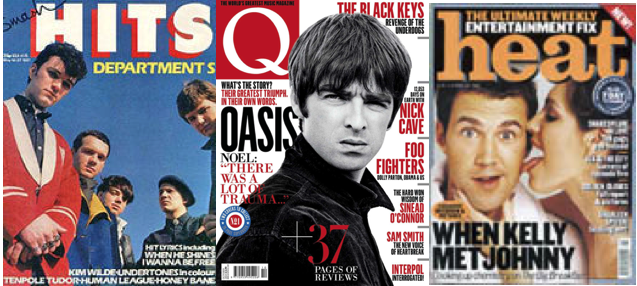What made EMAP so great at launching magazines? And what can today’s media learn?
In the 80s and 90s, EMAP was a force of nature in the magazine world, launching an endless stream of lifestyle, sports and hobby magazines, from Q and Empire to Today’s Golfer, More and heat. One of the architects of this stream of creativity was Dave Hepworth, who was interviewed in a rather dark and stuffy room by Colin Morrison recently in an event organised by The Media Society.
As a former EMAP staffer (16 years all told) I have to declare a slight interest, and bias, but this nostalgia trip did set me thinking about exactly why EMAP was so successful then, what has changed and what lessons if any, are still relevant to media organisations in 2018?
What made EMAP great at magazines?
Focus on readers first
David explained he always kept in mind “Tracy from Grantham” the archetypal Just Seventeen reader – and what she might think about the magazine. Hundreds of readers hand wrote and posted letters and competition entries – all were read and digested by the editorial team. The early editions of launches had very few advertisers, so there was total focus on satisfying readers
Backing editorial hunches (with a little extra research)
EMAP felt like an outsider, not part of the London magazine establishment, and was prepared to take risks and try new formats.
Innovative design
Editorial teams obsessed over covers, and design of spreads, endlessly thinking about how to present information visually. EMAP was great at packaging, and bold on cover prices.
Creating a habit
Based on knowledge of the reader, a magazine had to become a necessary weekly or monthly fix of information and entertainment. Building a mystique about the title and its team as the arbiters of what was new and cool enhanced this.
Understanding the newsstand
Back then, in those pre-internet days, browsing at the newsagent was the way to find new products, and EMAP had a deep knowledge of how to capture attention in that environment, with bold covers and gifts.
What has changed in the magazine world?
The EMAP launch machine ran out of steam in the early years of this century, as the internet started to provide specialist information and entertainment without having to trudge to the local high street. Consumers grew out of the habit of browsing in newsagents, and instead just relied on google and scrolling through Facebook.
Meanwhile magazine publishers became perhaps a little too reliant on advertising, losing their focus on readers, and began to adapt and distort magazine content to meet advertisers target audiences rather than what readers wanted. And as the industry became more conservative and defensive, and I fully include EMAP in this, there was less launch activity, and thus less to draw buyers back to the newsstand.
Thus began the damaging cycle of declining newsstand sales, fewer big launches, less space allocated to magazines at retail, and diminishing footfall.
I think it unlikely now that we could return to the buoyant days of the late 20th century when magazine launches came thick and fast and market shares could shift rapidly.
The newsstand is now built more around a few big retailers and a small group of reliable power brands, and smaller innovative launches are too much of a risk.
What can today’s media learn?
But what can we take from the experiences of the fast and furious magazine launch culture of the EMAP of the 80s and 90s? I think there are a few principles that might still help media organisations navigate the world of smartphones, fast content, social media and savvy readers:
- Readers First – listen to your audience and meet their needs ahead of advertisers
- Design to grab attention – be aware of visual storytelling
- Create a habit – do something useful or entertaining for your readers every week
- Build mystique – possibly use small live events to establish your brand as the authority
- Know your marketplace – today this might be google, Facebook or Instagram rather than WHS, but understanding how people use it to find new stuff is essential
And finally, of course, that core EMAP value, back your creative teams!
If you’re keen to talk more about the launch discipline of EMAP and how it could be applied to your own media business, feel free to get in touch to have a chat over the phone or over a coffee.
***
Find out more about how we can help
About the author:
Carolyn Morgan has over twenty years experience launching, growing, buying and selling specialist media businesses across print, digital and live events. Carolyn now advises publishers large and small on their digital strategy and writes and speaks on digital publishing strategy.

